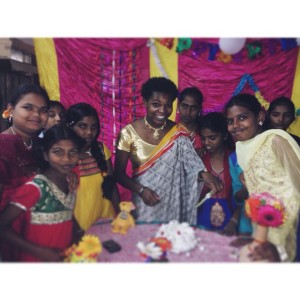Mosquito Borne Diseases: Prevention is Better than a Cure
Sometimes, when negotiating make-up days for missed classes or lobbying for use of a computer , fellows are called upon to defend the TMS program. From curious teachers, to expectant headmistresses, to students who wander into the classroom, people often ask us to explain exactly what the TMS curriculum is and how it’s as beneficial to students as the English class or elective period or computer time it’s cutting into. I can’t think of a better defense than what I saw in the classroom I shared with Karis and our Teach for India partner Ramesh.
At Monarch, our TFI school, Karis and I had a really great opportunity to fold the TMS curriculum into what the students were already learning. Before our first class, we sat down with Ramesh over Osmania biscuits and talked about how to build digital storytelling into the curriculum Ramesh already had in place. When Ramesh told us he was working through a science unit on mosquito borne illnesses, we figured that would be the perfect place. Instead of just taking notes about mosquito facts and getting quizzed on disease prevention techniques, the students got to write narratives about mosquito borne illnesses and come up with ways to visually communicate the facts they learned.
Working at Monarch wasn’t always easy. The students there were a few years younger than students at the other schools where we teach, so we learned a lot about adapting the material to a younger audience. For example: having 12 and 13-year olds film mini stories around campus? Pretty solid way to let them practice their camera angles. Having 9 and 10-year olds do the same activity? Pretty solid way to end up with a group of children running around school and occasionally filming a few seconds of it. But Ramesh came ready with a handful of classroom management techniques that we ended up even bringing into our other classes.
One of the best things about the TFI partnership was seeing how the curriculum leads so well into students taking action. The students took the project outside the classroom and into the community, spreading their knowledge of mosquito borne illness prevention around their neighborhood. Watch the video to see how the students used their TMS skills to apply what they learned about mosquitos.


